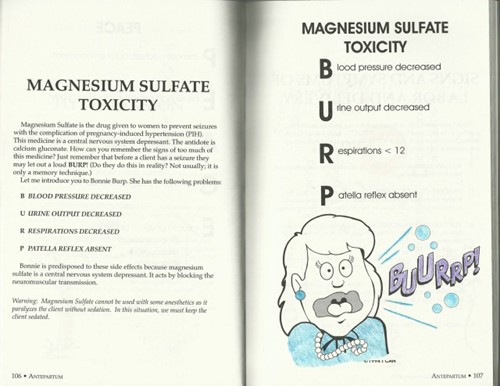Introduction
Introduction ( 5 Questions)
A nurse is assessing a client who has eclampsia and is receiving magnesium sulfate IV.
Which of the following findings should indicate to the nurse that the client is experiencing magnesium toxicity?
This indicates that the client is experiencing magnesium toxicity, which can cause muscle weakness, lethargy, and respiratory depression.
Magnesium sulfate is a medication used to prevent seizures in clients with eclampsia, but it can also have adverse effects if the dose is too high or the kidney function is impaired.
This is within the normal range for urine output.
The minimum urine output should be at least 30 mL/hr.
This is within the normal range for serum magnesium. The normal range is 1.7–2.3 mg/dL.
This is a normal finding for deep tendon reflexes.
A decreased or absent patellar reflex could indicate magnesium toxicity, as magnesium sulfate
The correct answer is choice A. Respiratory rate of 10/min. This indicates that the client is experiencing magnesium toxicity, which can cause muscle weakness, lethargy, and respiratory depression.
Magnesium sulfate is a medication used to prevent seizures in clients with eclampsia, but it can also have adverse effects if the dose is too high or the kidney function is impaired.
Choice B. Urine output of 40 mL/hr is wrong because this is within the normal range for urine output.
The minimum urine output should be at least 30 mL/hr.
Choice C. Serum magnesium level of 6 mg/dL is wrong because this is within the normal range for serum magnesium. The normal range is 1.7–2.3 mg/dL.
Choice D. Patellar reflex 2+ is wrong because this is a normal finding for deep tendon reflexes.
A decreased or absent patellar reflex could indicate magnesium toxicity, as magnesium sulfate

